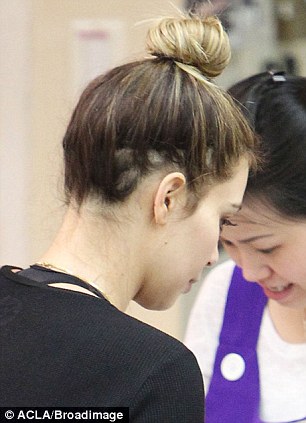Dr. Rassman
Thanks for all the information on your blog. Im 29 years old male with thick head of hair but was wondering about the Haircheck device. My dermatologist that I see every year looks and examines my hair and says its good with no signs of male pattern baldness or thinning. He told me that everyone has different hair patterns. Sometimes your hair transition from the front different which I have a frontal hair whorl which makes my hair go different directions.
You are always talking about the Haircheck device to get your bulk test done. I was wondering what is considered normal hair density for your hair not to be considered hair loss or thinning (male pattern baldness)? Is it 5% or 8% or below that? I now that you have to measure the back donor hair to get a good reading for the rest of the hair. Every video I’ve also seen of the Haircheck device they tell you to measure in the middle of the hair and the video shows it too. If you measure it from the hairline would your hair density be a little different than back even without male pattern baldness? If you do have 10% percent difference in the front or hairline than the donor hair in the back does that mean you’ll definitely be bald there or thin out there or could it stay like that the rest of your life possibly?
Thanks for your time and hope to hear back from you soon! Sorry if too long! Have a good Holiday!

Hair loss can be a very subjective thing. Measuring how much you are losing or gaining over a period time can be an issue if you do not have an objective metric. Using pictures with constant lighting may be good, but even with the same haircut and same hair style, subtle changes in angle and light can make your hair look better or worse. Thus using photos are a very subjective assessment.
We try our best to be objective by putting a value / number to things we can measure. We use miniaturization studies to give a general understanding of what is going on visually at the microscopic level, as the more miniaturized hairs you have, the more active your balding process is. Perhaps one day there will be a machine to count every single hair on your scalp with an analysis of the miniaturized hairs to good, healthy hairs
We also use the bulk measurement studies to estimate the bulk of hair at different parts of the head in a given fixed area. But all these tests have their issues and limitations. Bulk measurements can be inaccurate if you have gel or other products in your hair, giving a false high value. They also cannot be done if your hair is too short, as we can’t “grab” a portion of your hairs to fit in the caliper.
We do not measure the hairline necessarily, because we use microscopic assessment in the leading edge of a hairline. The HairCheck instrument usually measures an area behind the hairline. If you really want to measure the receding hairline, just get a tape measure and mark out the relative distance from a fixed point (such as your eyebrow or tip of your nose). Bulk tests are mainly used to compare the donor (back) hair against areas on the top and front of your scalp.
Finally, there is no specific rule we use for the bulk test to give you a prognosis, rather, we use the bulk test to keep a record of how you are doing with the treatment (or no treatment) over a period of time. One bulk test session does not show change over time, while two sessions over a year apart may show what is happening to your hair. In other words, you need at least two sets of data at different times (a year apart) to get an idea of what is happening.
One bulk measurement session may give you an idea of the relative thinning between one area of your scalp to another area of your scalp, and non-balding people should not show a change in bulk between areas… so in this respect one test will show emphatically if you are balding or not. A variation of 10% may be considered to be within a margin of error, though I wouldn’t place much significance to an ultimate diagnosis if such a small variation in bulk is measured, as the test, in my opinion, has an error factor of at least 10% (some would say up to 15%) in experienced hands.


 Fetal exposure to a commonly used plasticizer found in products such as water bottles, soup can liners and paper receipts can increase the risk for prostate cancer later in life, according to a study from the University of Illinois at Chicago published Jan. 7 online in the journal Endocrinology.
Fetal exposure to a commonly used plasticizer found in products such as water bottles, soup can liners and paper receipts can increase the risk for prostate cancer later in life, according to a study from the University of Illinois at Chicago published Jan. 7 online in the journal Endocrinology. Without seeing the patient in person for my own assessment and examination, I do not usually like to override another doctor’s opinion since they may have their own reasoning for giving a particular recommendation.
Without seeing the patient in person for my own assessment and examination, I do not usually like to override another doctor’s opinion since they may have their own reasoning for giving a particular recommendation.  She’s left fans green with envy thanks to her incredible post-pregnancy weight loss.
She’s left fans green with envy thanks to her incredible post-pregnancy weight loss.